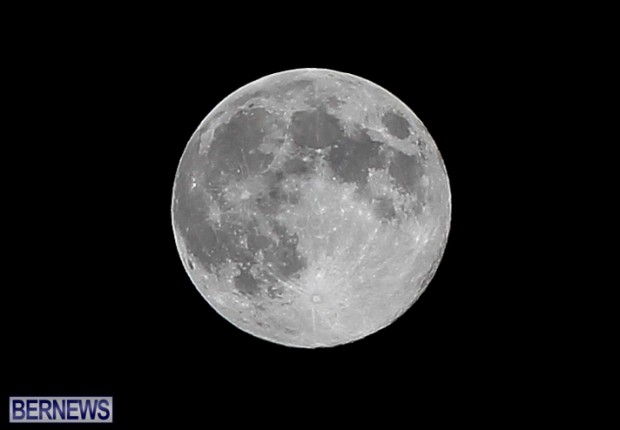“Blue Moon” Visible In Night Sky, Last Until 2015
Last night’s [Aug 20] full moon has been referred to as a “blue moon” — not because of its colour — but as it is an “extra” summer moon.
In most seasons there are three full moons, but occasionally there are four moons, and the extra moon is called a “blue moon,” giving rise to the cliche “once in a blue moon.”
Full moons occur approximately every 29.5 days, when the moon is directly opposite the sun from the perspective of Earth. “Blue moons” are far more infrequent, with the next one scheduled to occur in July 2015.
Photo taken off the east end of Bermuda at approximately 11pm last night:
The annual August full moon is also called a Full Sturgeon Moon, the Full Red Moon, the Green Corn Moon and the Grain Moon.
The Full Sturgeon Moon name came from ancient Native American tribes, as sturgeon fish can most easily be caught at this time of year. The Full Red Moon name came about as atmospheric conditions during this season can often make the moon look reddish when it rises, and the Grain Moon name was inspired by the fact that crops grow tall at this time of year.
Read More About
Category: All, Environment



The term blue moon is used nowadays to describe a second full moon in a single calendar month. This definition became “common usage” because of an astromomical reporting error over 50 years ago. Your older definition was used to describe the third full moon in a solar season which had four full moons.